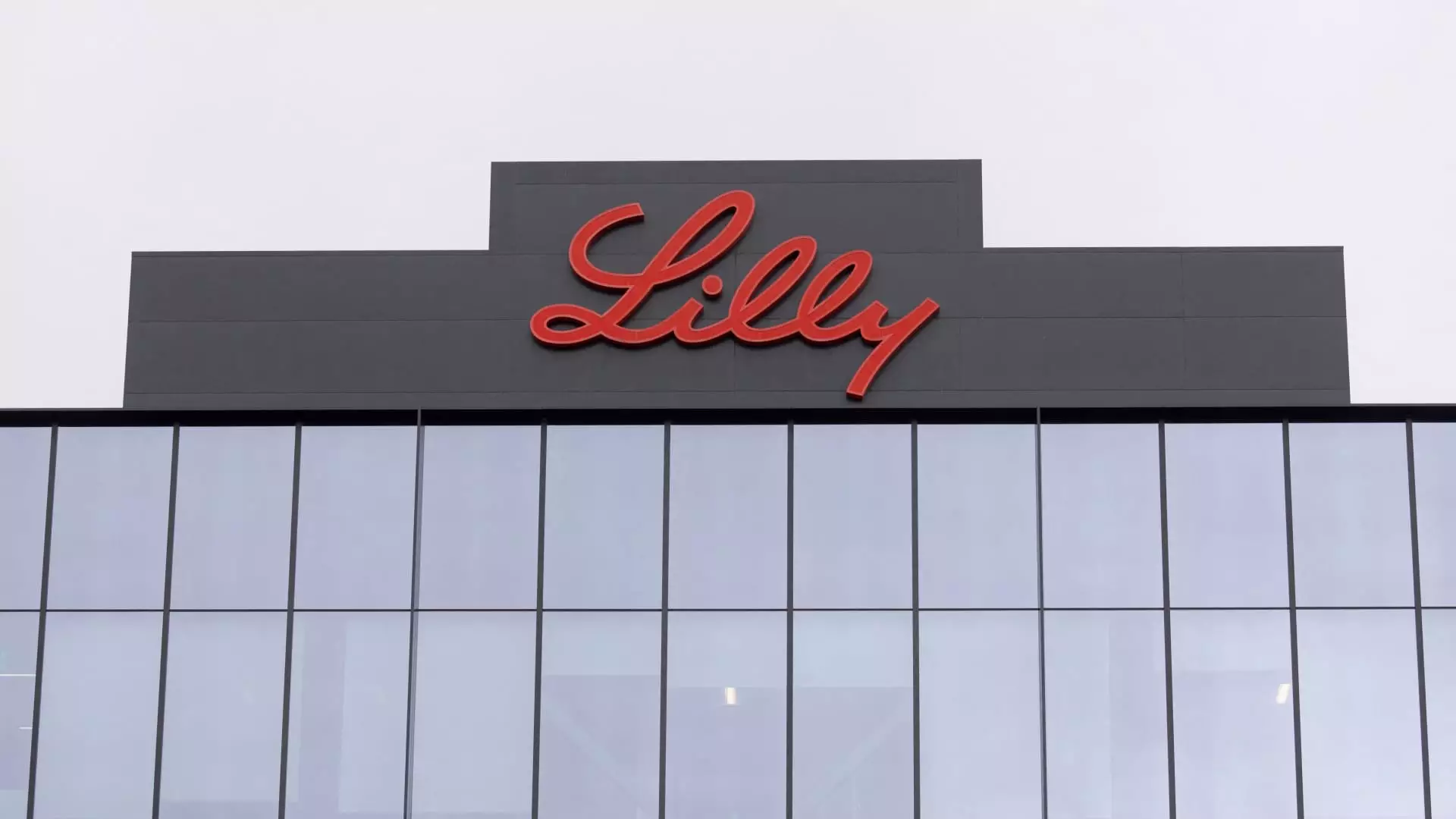Eli Lilly’s recent third-quarter earnings report sent shockwaves through the pharmaceutical market as it fell short of analysts’ expectations, primarily driven by underwhelming sales of its key medications, Zepbound and Mounjaro. The company adjusted its profit guidance downward significantly, indicating turbulent times ahead. This article dissects not just the figures associated with Eli Lilly’s performance but also the implications on its market position and strategy moving forward.
The release of Eli Lilly’s financial results revealed that the company’s adjusted earnings were $1.18 per share, considerably lower than the anticipated $1.47. In terms of revenue, the firm reported $11.44 billion, which also fell short of the expected $12.11 billion. As a consequence, Eli Lilly has revised its full-year earnings forecast to a range between $13.02 and $13.52 per share, down from a previous estimate that reached as high as $16.60. This marks a notable disappointment for investors who were banking on a strong performance to bolster the drugmaker’s stock price.
This downward revision in profit guidance — almost a drop of over 20% — did not go unnoticed in the stock market. Following the report, Eli Lilly’s stock plummeted by over 12%. Interestingly, its main competitor, Novo Nordisk, experienced a decline of over 3%, reflecting a broader market concern regarding the pharmaceutical sector’s outlook.
A significant factor contributing to Eli Lilly’s disappointing financials was the sales performance of Zepbound. Despite being marketed as a breakthrough weight loss drug, Zepbound generated sales of only $1.26 billion in its third quarter, a stark contrast to the expected $1.76 billion. This shortfall indicates a possible plateau in consumer demand or competition in the market that may be affecting its potential growth.
Mounjaro, while showing year-over-year growth with $3.11 billion in revenue, also fell short of analyst projections, which estimated sales to reach $3.77 billion. The underperformance of these key products raises questions about Eli Lilly’s market strategies and an increasing competitive landscape, particularly with Novo Nordisk, which has established itself as a formidable player in diabetes treatment.
Production and Supply Chain Challenges
Both Zepbound and Mounjaro are classified as incretin-based therapies that help regulate appetite and manage blood sugar levels. Eli Lilly acknowledges that it has faced significant demand pressures, leading to slight supply chain issues. However, the company’s CEO, David Ricks, noted during a CNBC interview that the third-quarter challenges were not solely due to supply constraints but rather exacerbated by inventory decreases among wholesalers.
Although manufacturing issues appear to be easing now, with the FDA reporting that all doses of Zepbound and Mounjaro are available in the U.S. market, this has not completely alleviated concerns for Eli Lilly. Ricks mentioned a delay in advertising efforts intended to promote Zepbound. The company intends to kick off marketing in November, a move that may help bolster awareness and accessibility, provided that supply channels remain stable.
In the third quarter, Eli Lilly did record net income of $970.3 million compared to a net loss from the same period last year. This suggests operational resilience despite the sales hurdles. However, the company had to navigate a significant $2.8 billion charge related to its acquisition of Morphic Holding, which has further strained its financial outlook.
Looking ahead, Eli Lilly anticipates a production increase of 50% for its incretin drugs in the latter half of 2024. The expansion of manufacturing capabilities is critical for the company, as demand continues to surge. Despite ongoing challenges from compounding pharmacies offering alternatives to their products, Eli Lilly’s focus remains firmly on enhancing its supply chain to meet market expectations.
Eli Lilly’s third-quarter results underscore a multitude of challenges, from disappointing drug sales to an altered profit outlook. While the company has several strategies in place to counteract these issues, including expanded production and promotional efforts, the market is rife with competition, particularly from Novo Nordisk. Investors and analysts alike will be watching closely to see how well Eli Lilly can rebound and reestablish itself as a leader in the pharmaceutical sector amidst increasing pressures. The path forward will depend not only on managing supply effectively but also on revitalizing consumer confidence in its flagship products.

